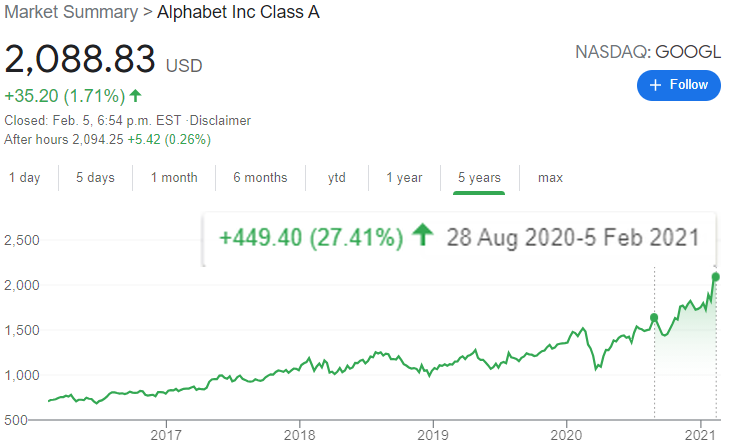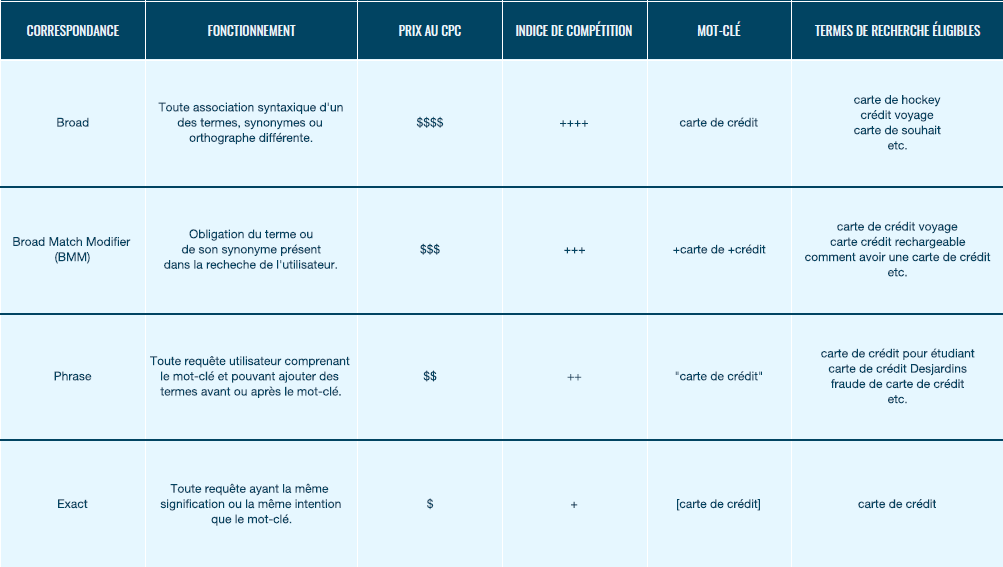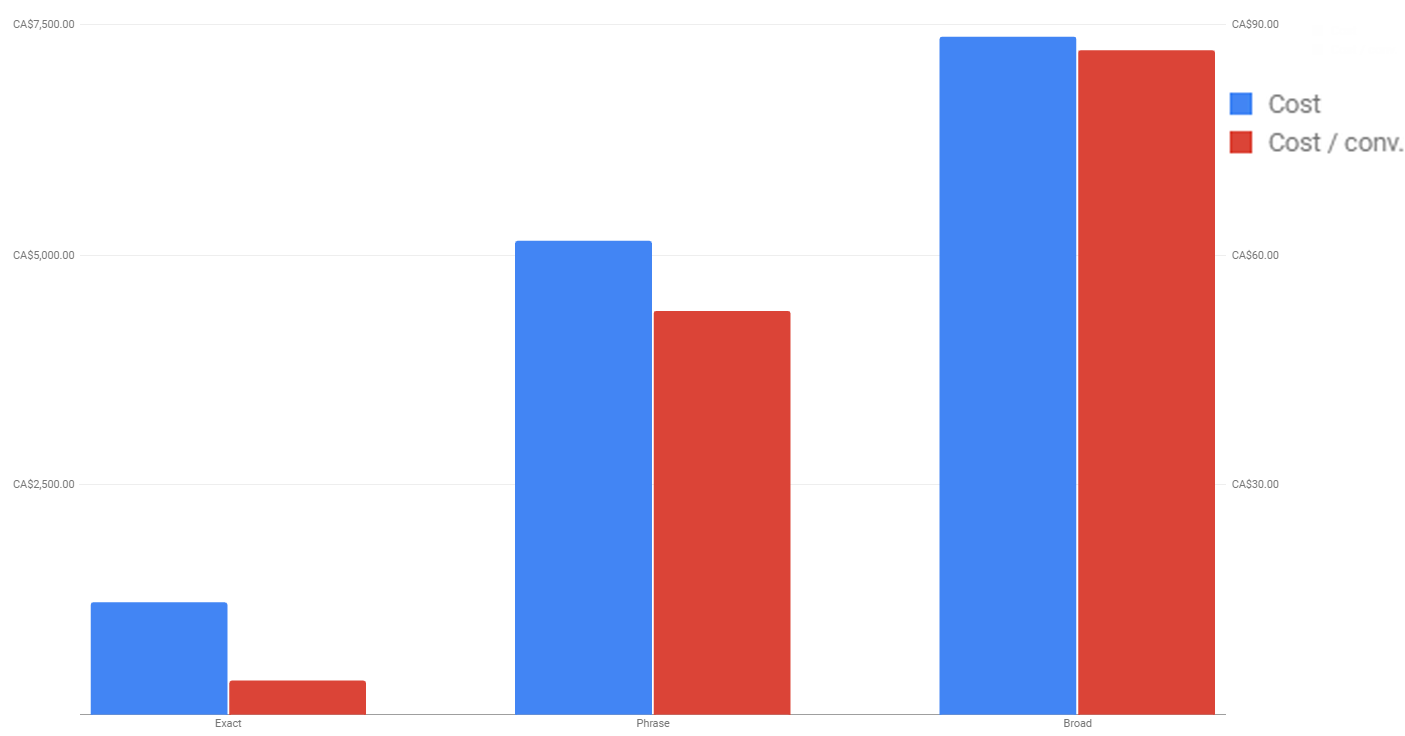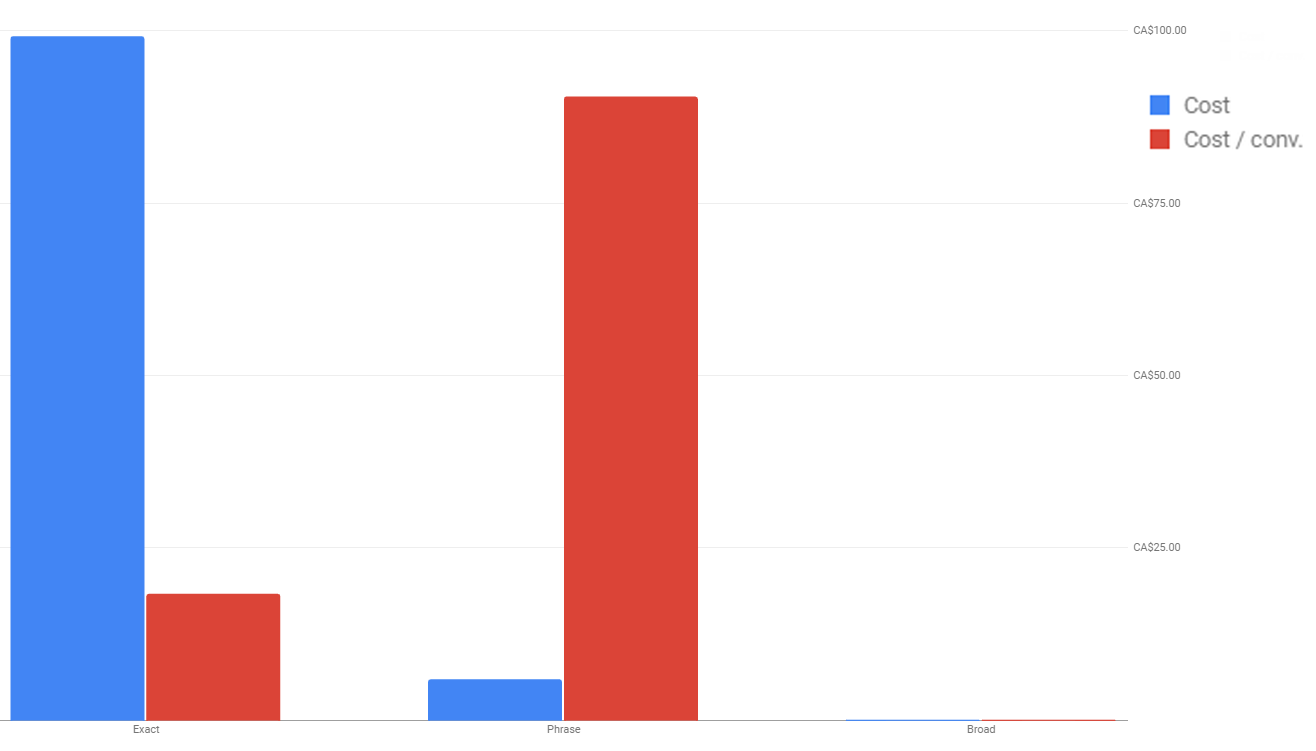Media Practice & Operations Director
The end of transparency at Google
Media Practice & Operations Director
For the past few years, Google has been moving more and more towards automated digital marketing solutions, but for whose benefit? Indeed, Google is increasingly automating its digital marketing products to make its solutions more accessible to its users and likely increase its profits.
Google Ads has evolved a lot since its creation in 2000. In recent years, several products have made the transition to the Smart (automated) format, where advertisers and customers lose several control options and must completely trust algorithms to manage results. . Although some of these Smart Campaigns , such as Smart Shopping , usually generate good results, fewer and fewer options are available to analyze the data and control our delivery in order to optimize our results.
Since the advent of Smart Campaigns , Google has made two updates aimed at greatly diminishing the control advertisers once had. One was for search term reporting and the other was for keyword match checking.
With the search terms reporting update rolling out in September 2020, it’s time for fundamental targeting to move on. Important changes will be made gradually to keyword matching starting February 18, and the migration will end in July 2021.
SEARCH TERMS REPORT OPACITY
In September 2020, justifying its decision on privacy considerations, Google Ads significantly reduced the transparency of its buying platform by a major reduction in access to the source data of search network campaigns: search terms.
“ In order to maintain our standards of privacy and strengthen our protections around user data, we have made changes to our Search Terms Report to only include terms that a significant number of users searched for. We're continuing to invest in new and efficient ways to share insights that enable advertisers to make critical business decisions” – Source
Search terms are the most important data for any campaign run on the search network. This report shows us the user searches where we got impressions and clicks and invested our budget.
This decrease in transparency has caused such a stir that a petition has been launched to demand the abolition of this update, but impossible to fight against a giant like Google. The cause was already lost.
Since that September 2020 update, approximately 40% of search term data has vanished, causing enormous opacity when it comes to delivering results and investments. The possibilities for optimization and delivery control have been greatly reduced, which has had a direct impact on the effectiveness of advertising campaigns, particularly with regard to the Quality Score. The Quality Score is made up of three elements: the engagement rate (CTR), which constitutes 75% of the Score, the correlation of the ad with the query, which constitutes 25% of the Score, and the quality of the destination. Considering that on average 30% of search terms are available, platform users have lost 40% of optimization capacity and must now trust the “System” which,

Here is a recent example of data available and data not available (“Other” queries) in the search terms report. “Other” queries are also known as BlindFold, which we covered in another article .

We tried to see if queries not available in the UI (Front-End) were available in the databases (Back-End) using tools that connect directly to Google databases through the APIs, such as SuperMetric and BigQuery. Unsurprisingly, the query is completely hidden, even for advanced users who connect directly to source data through API connections.
DECREASED KEYWORD MATCHING CHECK. TRANSITION FROM BMM TO EXPANDED PHRASE MATCH

As you can see, although we are narrowing our targeting to Phrase, we may still display on unwanted queries, for example a fraud-related query. It is therefore essential to properly manage your library of negative keywords in order to control its display. However, since September 2020, it is a much more complex task!
Each match type gets a different rate of effectiveness due to how it fundamentally works. Here's an example of a breakdown of investments by cost per acquisition (CPA) and match type. This is a typical situation (poorly optimized account) where the broader the targeting, the higher the CPAs. The objective is therefore to be as targeted as possible in order to reduce CPAs.


As you can see, Broad (including BMM) has 1,877% higher CPA than Exact , with 509% more investment. This is why we recommend always saturating Exact and Phrase before even thinking about Broad or BMM (Broad Match Modifier).
Here is the same account, once the marketing activities have been taken over by Adviso. Here we see a well-structured and optimized account. The Exact is saturated, maximizing performance, and has an 80% lower CPA than the Phrase.

That being said, Google is taking a step closer to data opacity by fundamentally changing how Match Type BMM and Phrase work. Indeed, February 18 will begin a transition from BMM to expanded Phrase , leaving more room for Phrase to qualify for user requests.

As Google's press release on this subject points out , the Phrase will gradually take more and more impressions by positioning itself on queries that we will not necessarily be able to verify in the search terms report. For its part, the BMM will get fewer and fewer impressions, until its withdrawal in July 2021.
This change will necessarily have an impact on the performance of the accounts . For accounts that rely heavily on Broad (which we don't recommend for the reasons given above), performance should gradually increase. However, for already optimized accounts leveraging Exact and Phrase, we should see for Phrase:
- an increase in impressions;
- a decrease in the Quality Score;
- a decrease in CTR;
- an increase in CPCs;
- a decrease in the conversion rate;
- an increase in CPAs;
- a decrease in ROAS (for e-commerce accounts).
HOW TO PREPARE FOR THIS TRANSITION?
We are ready thanks to an already very well optimized media activation cycle. Here are some points to consider in order to limit the impacts of these changes:
- Do thorough keyword research to identify:
- the keywords you want to target in Exact (priority 1) and in Phrase (priority 2),
- the terms you want to put in negative when creating your strategy. This step is crucial. It will guarantee the success of your Search marketing strategies and allow you to target the right user queries,
- Check the historical data of your search terms report to add as much Exact as possible and exclude unwanted terms if they are available in the report;
- Analyze your performance by Match Type, as we have shown you in this article, and make the necessary changes to maximize your performance;
- From February 18, follow the transition between BMM and Phrase if you have BMM in your strategy.
We anticipate, in light of these recent changes, a possible reduction in control in Google Ads campaigns, to the benefit of Google, which is gradually reducing transparency and control to increase its profits.
Our experts closely follow the evolution of the industry and will be able to meet your different needs to ensure a transition that will have the least possible impact on your business results.
Don’t hesitate to contact us for an account audit. We will evaluate the impact of these major changes and will work with you to plan your marketing acquisition strategy over the next few years.


.jpg)




